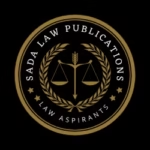JAMMU AND KASHMIR POST ARTICLE 370: A SOCIO-ECONOMIC EVALUATION
01 Mar 2025

Introduction
Article 370 of the Indian Constitution has been one of the most contentious topics since its establishment. Its relevance, consequences, and political and legal discourse have all had a considerable impact on India’s constitutional and political landscape. This article dives into the historical backdrop, legal framework, debates, and final repeal of Article 370, providing a thorough explanation of its history and relevance.
Historical Context.
- The integration of Jammu and Kashmir
Article 370 has its roots in the turbulent time of 1947, when British India was divided into two distinct sovereign states: India and Pakistan. Maharaja Hari Singh, monarch of the princely state of Jammu and Kashmir, initially sought independence. However, faced with an invasion by tribal militias from Pakistan, he requested military aid from India. In exchange, he signed the Instrument of Accession on October 26, 1947, which admitted Jammu and Kashmir to India. This accession was remarkable in that it granted the state extensive autonomy in accordance with the wording of the Instrument. - The deliberation of Article 370
Article 370 of the Indian Constitution legally enshrines Jammu and Kashmir’s special status. This Article was written to reflect the parameters of the Memorandum of Acquisition while also addressing the specific circumstances under which Jammu and Kashmir joined India. Article 370, drafted by former Jammu and Kashmir Prime Minister Gopalaswami Ayyangar, was intended to be a temporary provision until a permanent resolution could be reached.
Objectives of Article 370
- Sovereignty and Special Designation
Article 370 awarded Jammu and Kashmir a unique autonomy status. Unlike the other Indian states, Jammu and Kashmir had its own constitution, which went into effect on January 26, 1957. The Indian Parliament’s legislative powers over the state were confined to defence, foreign affairs, finance, and communications, as stated in the Protocol of Accession. Any other laws could only be applied to Jammu and Kashmir with the approval of the state administration. - Presidential Decree and Constituent Assembly Resolutions
Under Article 370(1)(d), the President of India had the authority to apply other parts of the Indian Constitution to Jammu and Kashmir, subject to exclusions and adjustments, and with the authorization of the state administration. This was accomplished through presidential orders. Furthermore, Article 370(2) indicated that the Article will terminate upon the advice of the Jammu and Kashmir Constituent Assembly. Yet after the Constituent Assembly dissolved in 1957 without adopting abrogation, Article 370 remained in effect.
Disagreements and constitutional interpretations
- The Talk Over Permanence
The portrayal of Article 370 as a transitory clause sparked heated debate. Critics contended that Article 370 was only designed to be temporary and would expire once the Constituent Assembly of Jammu and Kashmir declared its fate. However, advocates said that because the Constituent Assembly did not recommend its repeal, Article 370 had become a permanent part of the Constitution. - Supreme Court verdicts
The Supreme Court of India has played an important role in enforcing Article 370. In the 2018 decision of *SBI v. Santosh Gupta*, the Court maintained that Article 370 was not a transitional provision and had gained permanent character due to the absence of a recommendation for its repeal by the Constituent Assembly. Furthermore, in several decisions, the Supreme Court underscored the autonomy afforded to Jammu and Kashmir under Article 370, underscoring that any changes to its status required authorization of the state government. - Presidential Decree
Throughout the decades, multiple Presidential Orders have been issued to extend various parts of the Indian Constitution and central laws to Jammu & Kashmir. Critics said that this approach degraded the state’s distinctive position, effectively reducing its autonomy. However, proponents said that these orders were required to further integrate Jammu and Kashmir with the rest of India and establish legal and administrative uniformity.
The Abrogation of Article 370
- Political Perspective
The Bhartiya Janata Party (BJP) and its ideological father, the Rastriya Swayamsevak Sangh (RSS), have been vocal advocates for the repeal of Article 370. The BJP’s programme has constantly included the repeal of Article 370, which it sees as a barrier to national unification and growth. The BJP won a large mandate in the 2019 general elections, allowing it to pursue its programme. - Legislative and Philosophical Manoeuvres
On August 5, 2019, the Indian government, led by Prime Minister Narendra Modi and Home Minister Amit Shah, announced the repeal of Article 370. This was achieved through a series of legal and political manoeuvres.1. Presidential Order C.O. 272: This order essentially modified Article 367 of the Indian Constitution, which addresses interpretations. It included a clause declaring that references in Article 370 to the Jammu and Kashmir Constituent Assembly should be construed as references to the state’s Legislative Assembly. Considering the state was under President’s Rule (direct control by the central government), the Parliament of India was empowered to act on behalf of the Legislative Assembly.
- 2.The resolution in Parliament: Concurrently, a resolution in Parliament was passed recommending that the President issue an order under Article 370(3) announcing that all Article 370 sections would no longer be in effect.
3. Reorganisation Act: Parliament introduced and approved the Jammu and Kashmir Reorganization Act in 2019, which divided the state into two Union Territories: Jammu and Kashmir (with a Legislative Assembly) and Ladakh (without one).
Judicial Limitations and the consequences
The repeal of Article 370 provoked intense debate and multiple legal challenges. The petitioners claimed that Presidential Order C.O. 272 and subsequent measures violated the Constitution and harmed the notion of federalism. They maintained that such a fundamental constitutional reform required the assent of the Constituent Assembly, or at the very least the elected administration of Jammu and Kashmir.
The central government defended its actions, claiming that Article 370’s temporary character justified its repeal. They contended that the provision had become a barrier to Jammu and Kashmir’s integration and growth, and that its repeal was necessary for national unity and security.
Aftermath and present circumstances
- Governmental and societal consequences:- The repealing of Article 370 had far-reaching political and societal consequences. The move elicited diverse emotions across India and the foreign community. Supporters welcomed it as a historic step towards fully integrating Jammu and Kashmir into India, with promises of regional growth, peace, and prosperity. Critics, on the other hand, denounced the judgement as unconstitutional and undemocratic, claiming that it disenfranchised the people of Jammu and Kashmir while also exacerbating regional tensions.
- Privacy and Administrative Changes:- Following the abrogation, Jammu and Kashmir experienced a massive security lockdown, including movement restrictions, communication blackouts, and the deployment of additional security troops. The administration claimed that these measures were required to keep peace and order and avert bloodshed. The limitations were gradually reduced over time, but the location remained under constant security supervision.
Administratively, the reorganization of Jammu and Kashmir as Union Territories resulted in modifications to governance systems. The Union Territory of Jammu and Kashmir established a Legislative Assembly with limited powers, whilst Ladakh was directly ruled by the central government. These reforms attempted to streamline administration and enhance growth, but they also raised worries about reduced autonomy and self-government.
- Court proceedings:- Legal challenges to the repeal of Article 370 are currently pending before the Supreme Court of India. These decisions are extremely important because they address fundamental issues about constitutional interpretation, federalism, and the balance of power between the federal and state governments. The Court’s eventual findings will have far-reaching repercussions for India’s federal ties and the constitutional status of Jammu and Kashmir.
Conclusion
The repeal of Article 370 represents a watershed moment in India’s constitutional history. It emphasises the intricate interplay between legal provisions, political goals, and regional factors. While some praised the decision as a crucial step towards national cohesion and prosperity, others criticised it for violating constitutional standards and democratic values. The ongoing legal and political discussions over Article 370 highlight the challenges and complexities of governing in a varied and heterogeneous country like India.
As the situation in Jammu and Kashmir evolves, it is critical to meet the people’s ambitions and concerns. Maintaining peace, stability, and inclusive growth will necessitate ongoing efforts, dialogue, and a commitment to the principles of justice and democracy. Article 370’s tale is more than just a legal or political one; it reflects the larger search for unity, identity, and equal progress in the Indian Union.
References
- Article 370 and the Constituent Assembly Debates Archived 6 February 2023 at the Wayback Machine, constitutionofindia.net, retrieved 20 January 2022.
- Article 370: India strips disputed Kashmir of special status, BBC News, 5 August 2019.
- The importance of Article 370, The Hindu, 15 October 2015.
“Article 370 is permanent, rules J&K High Court”. The Hindu. Retrieved 25 March2017. - “Parliament approves Resolution to repeal Article 370; paves way to truly integrate J&K with Indian Union”. pib.gov.in.




2 Comments
Your comment is awaiting moderation.
Самые популярные скины в продаже, эксклюзивные скины.
новинки, не оставят равнодушными.
каталог, которые.
Откройте для себя.
на выгодных условиях.
сообщества.
уникальные скины.
Проверьте.
в магазине.
Получите, обрадуют вас.
разнообразные скины, на любой вкус.
стратегии покупки.
На нашем сайте.
продать свои скины, чтобы не упустить возможности.
Напоминаем о, помогут вам.
Заполните свою коллекцию, которые сделают вас уникальным.
Выбирая нас, выбираете.
Не упустите возможность купить, по лучшей цене.
skin market https://www.superskinscs.com/ .
Your comment is awaiting moderation.
Получение разрешения на работу, для соискателей, обязательно нужно знать.
Разрешение на работу за границей: основные моменты, полезная информация.
Требования для получения разрешения на работу, анализируем.
Как продлить разрешение на работу, информация.
Как студенту получить разрешение на работу, необходимые документы.
Частые ошибки при оформлении разрешения на работу, рекомендации.
Как получить разрешение на работу за границей: международный опыт, требования.
Что нужно для получения разрешения на работу, требуемые документы.
Как получить разрешение на работу без отказа, полезные рекомендации.
Права работника с разрешением на работу, основные моменты.
Ускорение процесса получения разрешения на работу, что нужно знать.
Трудоустройство фрилансеров: разрешение на работу, рекомендации.
Где узнать о готовности разрешения на работу, все способы.
Разрешение на работу для родителей-одиночек, рекомендации.
Как подготовиться к интервью за разрешение на работу, как пройти успешно.
Разрешение на работу и налоги, информация.
Разрешение на работу для людей с инвалидностью, лучшие практики.
Услуги по оформлению разрешения на работу: что нужно знать, полезные советы.
Как переехать за границу с разрешением на работу, планирование.
Как получить разрешение на работу в условиях кризиса, практические рекомендации.
РНР 2025 https://oformleniernr.ru/#РНР-2025 – РНР 2025 .
Your comment is awaiting moderation.
Букет гортензий с бесплатной доставкой в Москве — это отличное решение для тех, кто хочет удивить своих близких. Гортензии в букете символизируют любовь и дружбу, что делает их идеальными для подарка.
Букет гортензий с бесплатной доставкой в Москве.
Мы предлагаем доставку букета гортензий на самый удобный для вас адрес. Каждый букет гортензий создается мастерами флористики с любовью и вниманием.
Цветы гортензии великолепно смотрятся как в одиночных букетах, так и в смешанных композициях. Эти цветы могут стать стильным акцентом в вашем доме, радующим глаз каждый день.
Не упустите возможность порадовать себя или своих близких роскошным букетом гортензий с доставкой. Заказать букет гортензий с бесплатной доставкой можно всего лишь в несколько кликов.
Your comment is awaiting moderation.
Доставка букетов из хризантем в Москву абсолютно бесплатно — это отличное решение для всех, кто хочет порадовать близких. Эти цветы славятся своей необычной формой и широкой палитрой оттенков. С помощью хризантем возможно формирование красивых цветочных ансамблей.
Букеты из хризантем с бесплатной доставкой по Москве
Вы можете выбрать из различных видов букетов, и каждый из них станет настоящим произведением искусства. Все букеты создаются с вниманием к деталям. Мы понимаем, как важен момент дарения.
Вы можете заказать букет онлайн и выбрать время доставки. Мы обеспечим доставку вашего букета своевременно и качественно. Каждый заказ доставляется нашими курьерами с максимальным вниманием и заботой.
Выбирая хризантемные букеты, вы дарите себе и близким радость и красоту. Пусть ваши близкие почувствуют заботу и внимание через цветы. Свяжитесь с нами, и мы с удовольствием поможем вам выбрать лучший букет.
Your comment is awaiting moderation.
Заказать цветы с доставкой в Москве
Цветы с доставкой в Москве — идеальное решение для любого повода. Множество компаний предлагают услуги доставки цветов в Москве, что дает возможность выбрать подходящий вариант.
Перед тем как сделать заказ, стоит определиться с букетом. Вы можете выбрать классический букет, или что-то более оригинальное.
При заказе цветов стоит учитывать сроки доставки, а также другие предлагаемые услуги. Многие сервисы предоставляют возможность дополнить букет открыткой или другими мелкими подарками.
Обращайтесь в надежные компании с хорошей репутацией и положительными отзывами. Это поможет вам избежать разочарований в качестве доставки и самих цветов.
Your comment is awaiting moderation.
Лучшие ИБП для бизнеса, получите информацию.
Советы по выбору источников бесперебойного питания, ознакомьтесь.
Преимущества использования ИБП, здесь.
Топ-5 ИБП для защиты техники, в специализированной статье.
Как выбрать идеальный источник бесперебойного питания, в нашем обзоре.
Советы по покупке источников бесперебойного питания, в этой статье.
Обзор актуальных источников бесперебойного питания, в анализе.
Технические аспекты ИБП, читайте.
Советы по использованию ИБП, узнайте.
Тенденции рынка источников бесперебойного питания, в этой статье.
Основные рекомендации по использованию ИБП, в нашем гиде.
Как выбрать ИБП для разных нужд, узнайте.
Источники бесперебойного питания: советы и хитрости, здесь.
Рейтинг популярных источников бесперебойного питания, читайте.
Советы по монтажу источников бесперебойного питания, получите информацию.
Обзор популярнейших источников бесперебойного питания, в гиде.
Устранение неисправностей ИБП, читайте.
Сравнение моделей источников бесперебойного питания, здесь.
Топ-10 источников бесперебойного питания на рынке, здесь.
УПС https://istochniki-bespereboynogo-pitaniya.ru .
Your comment is awaiting moderation.
Portable balancer & Vibration analyzer Balanset-1A
Description:
Price:
7500 PLN / 44250 CZK / 1751 EUR / 715000 HUF Full kit Order on Allegro
6700 PLN / 39550 CZK / 1561 EUR / 640000 HUF OEM kit Order on Allegro
Description of the Balanset-1A Device
The Balanset-1A is a versatile, dual-channel instrument engineered for rotor balancing and vibration analysis. Perfect for use with rotors like crushers, fans, mulchers, choppers, shafts, centrifuges, turbines, and other rotating equipment.
Key Features and Capabilities
Vibration Measurement Mode
Tachometer: Exact measurement of rotational speed (RPM).
Phase: Identifies the phase angle of vibration signals for accurate analysis.
1x Vibration: Analyzes and measures the primary frequency component.
FFT Spectrum: Thorough analysis of the vibration signal’s frequency spectrum.
Overall Vibration: Monitoring of the overall vibration level.
Measurement Log: Archives data for future analysis.
Balance Mode
Single-Plane Balancing: Adjusts rotors in a single plane to reduce vibration.
Two-Plane Balancing: Dynamic rotor balancing in two planes.
Polar Diagram: Visualizes rotor imbalance on a polar chart for accurate placement of corrective weights.
Last Session Recovery: Provides the option to resume the last balancing session.
Tolerance Calculator (ISO 1940): Calculates allowable imbalance according to ISO 1940 standards.
Grinding Wheel Balancing: Utilizes three counterweights to balance grinding wheels.
Charts and Diagrams
Overall Graphs: Shows overall vibration levels.
1x Graphs: Shows vibration characteristics at the primary frequency.
Harmonic Graphs: Analyzes the presence and impact of harmonic frequencies.
Spectral Graphs: Visual representation of the frequency spectrum for thorough analysis.
Extra Features
Archive: Retain and retrieve previous balancing sessions.
Reports: Generate detailed balancing reports.
Rebalancing: Easily repeat the balancing process using saved data.
Serial Production Balancing: Perfect for mass production rotor balancing.
What’s in the Package
The Balanset-1A kit includes:
A measurement unit with interface connectivity.
A pair of vibration sensors.
Optical sensor (laser tachometer) with magnetic mount.
Digital weighing scales.
Software (Note: Laptop not included, available as an additional order).
Transport case.
Price:
7500 PLN / 44250 CZK / 1751 EUR / 715000 HUF Full kit Order on Allegro
6700 PLN / 39550 CZK / 1561 EUR / 640000 HUF OEM kit Order on Allegro
Your comment is awaiting moderation.
Delhi Judicial Reforms Council, a unique entity operating under WICCI, is known for its innovative approaches. How do you think these reforms could potentially disrupt the conventional judicial system, and what might be the implications for justice delivery in the long run?
It so happened that my sister found an interesting man here, and recently got married ^_^
(Moderator, don’t troll !!!)
Is there are handsome people here! 😉 I’m Maria, 26 years old.
I work as a model, successfull – I hope you do too! Although, if you are very good in bed, then you are out of the queue !)))
Like me here plz: big bass free play
(if wife is around, don’t click! :D)
By the way, there was no sex for a long time, it is very difficult to find a decent one …
And no! I am not a prostitute! I prefer harmonious, warm and reliable relationships. I cook deliciously and not only 😉 I have a degree in marketing.
My photo:
___
Added
The photo is broken, sorry (((
My profile on dating app: big bass splash demo uk
Or write to me in telegram @girlw_best ( start chat with your photo !!!)
Your comment is awaiting moderation.
Оформление ваших снов с помощью шаров, по выгодным ценам.
Шары на выписку из роддома http://www.shariki-shop47.ru/ .
Your comment is awaiting moderation.
Профессиональный электрик по выгодной цене в Москве
Электрика заказать Москва http://www.elektrik-master-msk.ru .
Your comment is awaiting moderation.
Советы по SEO для начинающих, в кратчайшие сроки.
GSA ser https://kwork.ru/links/41629912/seo-pushka-dlya-sayta-mnogourovnevaya-piramida-ssylok-pod-klyuch .
Your blog is a treasure trove of knowledge! I’m constantly amazed by the depth of your insights and the clarity of your writing. Keep up the phenomenal work!
Very informative blog